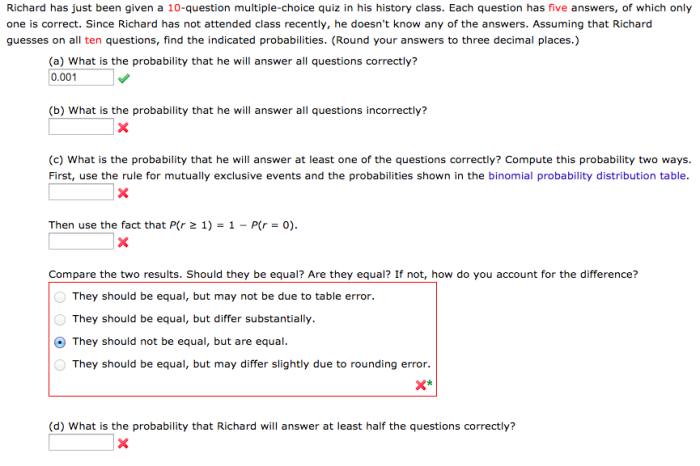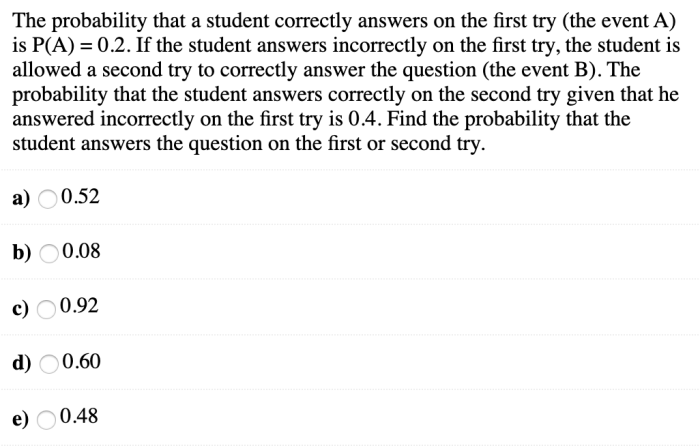Each question Sandra answers incorrectly unveils a treasure trove of opportunities for learning and growth. This intricate narrative explores the profound impact of incorrect answers on the learner’s journey, unraveling the strategies, technologies, and data-driven insights that empower educators and learners to transform errors into stepping stones toward academic excellence.
Delving into the realm of learning experiences, this discourse illuminates how incorrect answers can both hinder and enhance comprehension. By identifying and addressing misconceptions effectively, educators foster a supportive environment where learners can self-correct and cultivate accuracy. Moreover, technology emerges as a powerful ally, enabling the analysis of incorrect answers and providing personalized learning experiences tailored to individual needs.
Impact on Learning Experience

Incorrect answers can significantly hinder a learner’s understanding of the subject matter. When learners provide incorrect answers, they may develop misconceptions that can persist and impede their progress. For instance, if a student incorrectly answers that photosynthesis occurs at night, they may continue to hold this misconception and struggle to grasp the concept of photosynthesis as a daytime process.
Strategies for Addressing Incorrect Answers
Identifying and addressing incorrect answers is crucial for effective learning. Educators can use various methods to identify errors, such as reviewing student work, administering quizzes, or using online assessment tools. Once errors are identified, targeted support can be provided to help learners understand the correct concepts and correct their misconceptions.
Learners can also play an active role in self-correcting their errors. By reviewing their work, identifying errors, and seeking clarification from educators or peers, learners can improve their accuracy and deepen their understanding.
Use of Technology
Technology can be a valuable tool for analyzing incorrect answers. AI-powered tools can analyze large datasets of student responses and identify common errors, patterns, and misconceptions. This data can then be used to develop targeted interventions and improve the learning process.
Implications for Assessment
Incorrect answers can impact assessment results, potentially leading to lower scores and inaccurate evaluations of student understanding. It is important to consider the reasons behind incorrect answers, as they may indicate areas where learners need additional support or where assessment practices need to be revised to encourage learning from errors.
Data-Driven Insights, Each question sandra answers incorrectly
Data collected from incorrect answers can be used to improve teaching and learning. By analyzing patterns and trends in incorrect answers, educators can identify areas where learners are struggling and tailor instruction to address these weaknesses. This data-driven approach can help ensure that learners receive the support they need to succeed.
Answers to Common Questions: Each Question Sandra Answers Incorrectly
How do incorrect answers affect learning?
Incorrect answers can hinder comprehension by reinforcing misconceptions and creating barriers to understanding. However, they also provide valuable opportunities for educators to identify areas where learners need additional support and to develop targeted interventions.
What strategies can be used to address incorrect answers?
Effective strategies include immediate feedback, targeted support from educators, and self-correction techniques that encourage learners to reflect on their errors and develop strategies for improvement.
How can technology be used to analyze incorrect answers?
Technology, including AI-powered tools, can analyze incorrect answers to identify patterns and trends, providing insights into common misconceptions and areas where learners need additional support.


